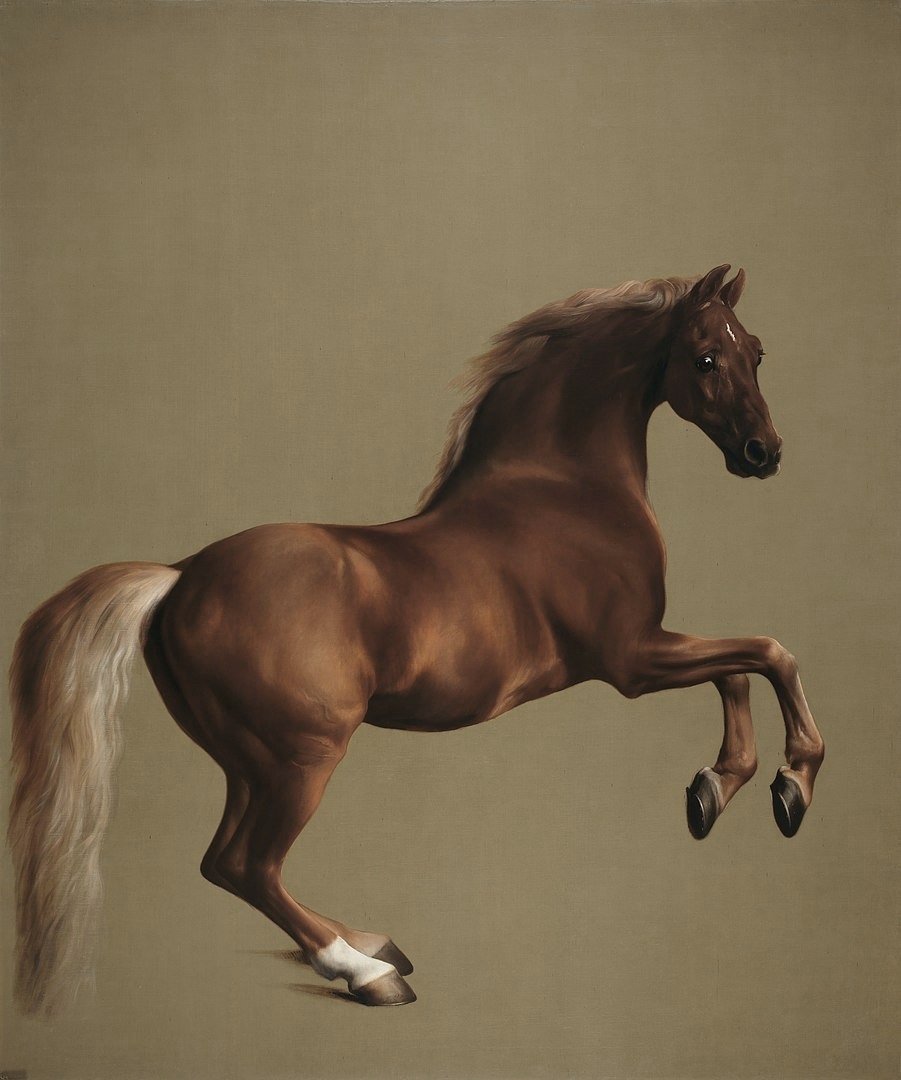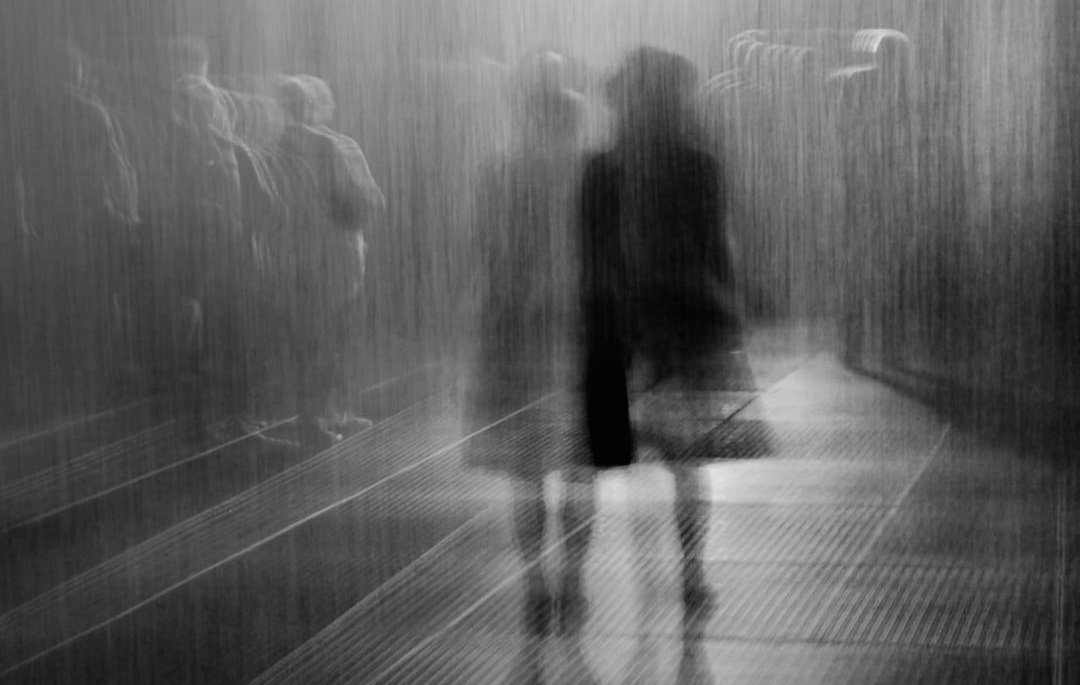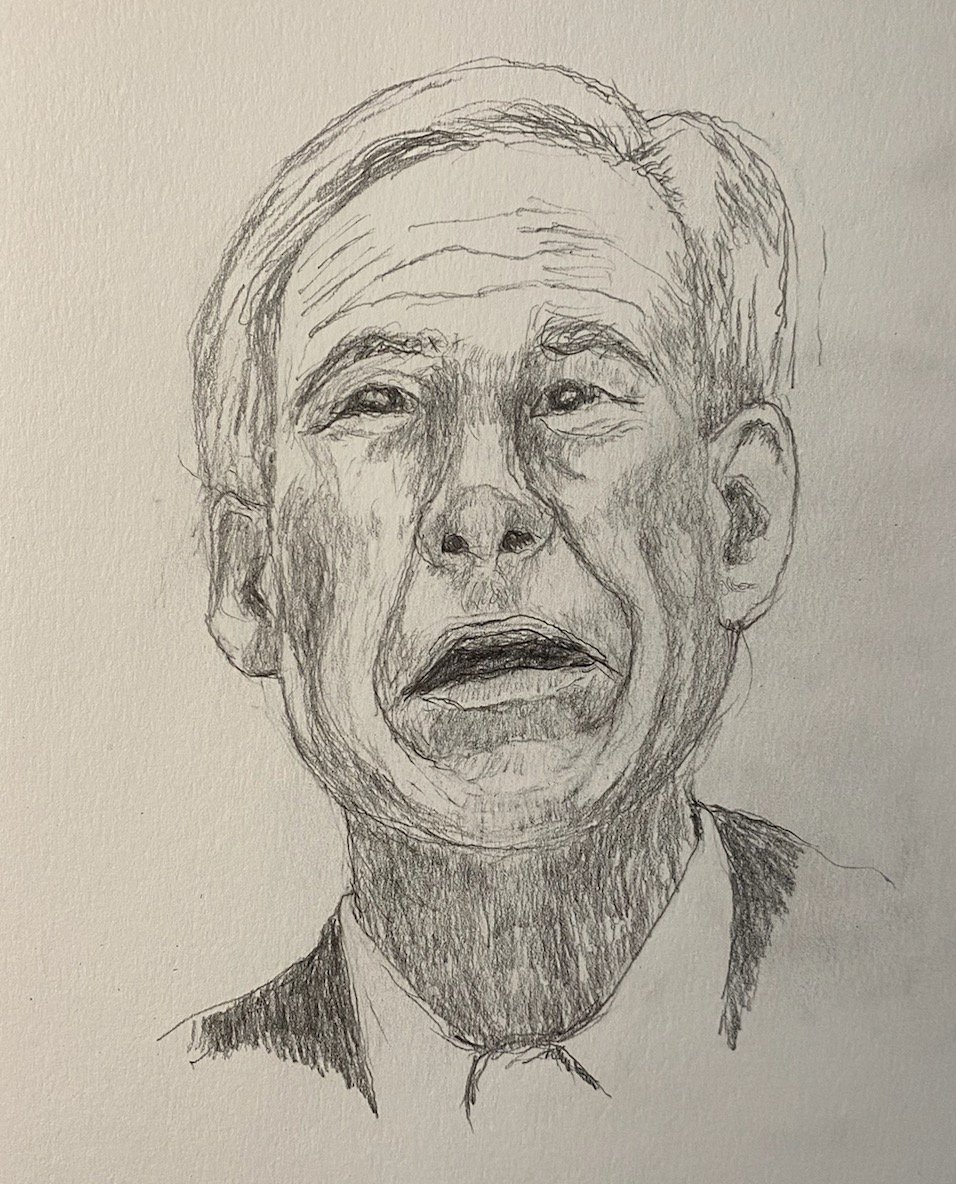Where’d She Go?
About twenty years ago, my husband and I began attending art auctions. We didn’t know anyone and were never included in the post-auction lunch outings, so it was odd when we attracted the attention of a woman who always asked if she could join us for coffee or a meal. In the beginning we were baffled as to why this vague and whispery woman would’ve latched onto us, two unknowns. But we also wondered if she wasn’t aware of a certain hidden fact about us, one that we wanted to keep secret. We’ll never know for sure, because she mysteriously disappeared without a trace.
A FOUR-PART SERIES, BASED ON A TRUE STORY
originally published February 2023 on nicolejeffords.com
Part I: Where’d She Go?
Whistlejacket (ca. 1762), oil on canvas, 292 x 246.4 cm., National Gallery
In the mid-aughts, our family status changed. My husband and I had lost both sets of parents and we were now officially adults. As adults, we stepped into our parents’ shoes and began almost immediately to do what they had done, which was to collect art. My parents’ final home, an apartment on Park Avenue, was filled with valuable African masks and sculptures; my in-laws, who lived a few blocks away, occupied the entire floor of an exclusive, chi chi building and every one of their oak-paneled walls was hung with a multitude of sporting paintings. (Two little factoids: Barbara Walters, who wanted to live in their building, had been turned down because the board didn’t approve of entertainers and all the publicity they brought; and Winston Churchill was rumored to have had a heart attack in my in-law’s apartment when it was owned by Bernard Baruch, the previous tenant.) And so, like our parents before us, we began to go to auctions.
Morning auctions at both Sothebys and Christies began at ten sharp and ended at noon. The crowd was well-heeled. Often one could spot the buyers who sat whispering quietly to the hired personal consultants seated beside them. The dealers always stood, in dark suits and ties, or silky dresses, at the back, a recognizable brethren. As the auction ended, people would gather in groups, schmooze for a few minutes and then go out to lunch. We didn’t know anyone and were never included, except by one person, a sleepy-eyed, rather ordinary-looking woman, who would always follow us out of the auction hall and ask if she could join us for coffee or a meal.
Her name was Andrea Jean Levy, and in the beginning, because she seemed so vague and out-of-it, we assumed she was on drugs. Why else would she have latched onto two unknowns?
But we also wondered if she wasn't aware of a certain hidden fact about us. A few years earlier, we’d wandered through the pre-sale gallery of American painting at Sothebys and noticed a museum-worthy portrait by a household name painter listed at a price we could actually afford. At the time we weren’t taking ourselves seriously. Why not try buy it? we wondered. This was just a lark and we went down to the business desk and placed a phone bid on the painting. (When the auction took place, we’d be back in Austin, so they’d phone us when the piece came up.) A day later, when we left New York and returned to our normal lives, we forgot all about the painting and the tenuous connection we had to it.
Part II: Where’d She Go?
About a week later, I was sitting at my desk in Austin when my cell phone rang. A voice at the other end said, “Mrs. Jeffords, your piece is about to come up.”
Huh? I was completely blank.
And then I remembered. My husband was out of town at the time. (In fact, he was on a plane and I had no way to reach him.) We hadn’t discussed the painting at all, and I had no idea how much money he was willing to spend on it. In my mind, I decided on an arbitrary amount; if it went beyond that, I’d stop bidding. I was shaky and my throat was dry. I’d never dealt with so much money before.
Magically, the bidding stopped just at the amount I’d decided was the most I could spend. I was the new owner of an important painting and without my husband’s okay, I was clueless as to whether I’d done the right thing or not. It was confusing. On the one hand, I felt extremely powerful. On the other, I felt like a dithering idiot. The portrait was of a woman and she had the exact same face as Madame X.
What had I done? I was scared and wanted to dive into bed and hide under the covers. But the painting was mine whether I liked it or not, and I’d have to face the music (my husband said he felt sick when I told him the news). A few weeks later, the painting arrived in a sturdy crate, and we hung it in a prominent place over the couch in our library. We were happy with our new acquisition, but decided to keep the purchase secret as we didn’t want to draw attention to ourselves or our growing collection.
So perhaps it was that, the fact that we owned an important painting, that drew the vague, whispery Andrea Jean Levy to wanting to have lunch with us after auctions.
Whatever it was, we were stuck with her and we had no idea who she really was.
Part III: Where’d She Go?
As time passed and we went to more and more auctions, Andrea Jean and I developed an extremely close friendship. We’d go for lunch. We’d go for dinner. We’d talk on the phone. There were no limits to the things we could discuss, relationships with our families, our husbands and partners, our opinions about people in the art world, about the paintings themselves. She’d never been married, but she had a boyfriend, an older man, very poised and worldly, who had a seaside home not far from the Hamptons, and an ex wife who wouldn’t give him a divorce. Andrea Jean spent part of her time in her small midtown apartment in the city, and part out on Long Island with her boyfriend, whose name was Theo. She was fun and I loved hanging out with her, loved flying up to the city to visit her and go on crazy expeditions all over town. And then, one day, Theo noticed a tiny black mole in the small of her back.
It was serious. Melanoma. The little bit of tissue, striated and crusty, would be a death sentence if not attended to quickly. To me, the removal of a mole, even a dangerous one, seemed fairly straightforward. The surgeon would just take his sharp tool and dig it out, right? But it was far more complicated. Andrea Jean was put in the hospital where her entire body was scanned (they even had to scope her lungs) and where she underwent an invasive surgery to get at the roots of the mole. Afterwards she needed a lot of rest, so it was a while before I saw her again.
But when I did, she seemed unchanged. Maybe a little fragile, but still fun-loving and adventurous. She wasn’t going to permit a little mole to get her down. Not that it was something we spoke about – in fact, the subject was kind of taboo, the only issue in her life we avoided because Andrea Jean was in denial about the seriousness of her condition. But I was worried about her.
I was scared of the hole her absence would leave in my life should the surgery prove unsuccessful, allowing the cancer that had started as a little scrap of nothing to spread defiantly to all the organs of her body.
Part IV: Where’d She Go?
A few weeks passed with Andrea Jean and I closely in touch, and then, suddenly, I stopped hearing from her. I’d call and email – no response. We’d go to auctions and all the usual people would be there, but no Andrea Jean. I asked around. Supposedly she was a dealer, but no one had ever heard of her, even though, historically, she’d been present at every single auction we’d ever attended. Have you seen Andrea Jean? we’d ask, only to be met with blank stares. Who was this person? She’d disappeared and now, for no reason I could think of, I was minus a friend.
When I went online I could find nothing about her, except that she’d once run a curatorial service; but that was small potatoes, a deadend – there’d been no posts in a long while (since the eighties!), and the few words connected to Andrea Jean were insignificant, just some blah blah about her having once been an art critic and a list of relatives, most of whom lived in Florida or Boston. I played with the idea of contacting her father, but when I eventually reached out to him, I never heard back. I considered getting in touch with her boyfriend, Theo, but for the life of me I couldn’t remember his last name. I scoured the internet, called every single person I knew who might be familiar with Andrea Jean, but came up empty. The woman had completely disappeared. And so I checked the obituaries. But there was nothing there either.
What the hell had happened? It was a mystery. Why would someone go off the grid like that, ignore her friends?
There’d been no falling out between me and Andrea Jean, no arguments or issues or meanness of any kind. She’d simply stopped communicating. I decided to give it a break for a little while, concentrate on other things. Trump was elected. Out of horror and disgust, I began a ghastly series of paintings of his administration. That took two years, and then I got busy drawing politicians and writing smack about them. I was pretty public. If Andrea Jean had been paying attention, she would have seen my work posted on the internet. But she was gone and I badly missed her friendship.
Greg Abbott, Nicole Jeffords (2022)
One day, perhaps about a year or so before Covid set in, my husband and I were in New York and found ourselves on Andrea Jean’s block. We decided to talk to her doorman. “Does Andrea Jean Levy still live here?” I asked.
“Yes, she does.”
“Is she okay?”
The doorman looked at me blankly. “As far as I know.”
“When did you last see her?”
“This morning.”
Well, that was a shock.
Andrea Jean was alive and well and ignoring me. The question was, why?
I quickly wrote her a note telling her how sad I was about being out of touch. But she never answered. I chalked it up to weirdness. In my mind, I relegated her to the auction hall, a blurry presence forever standing with the dealers at the back of the room, smiling wistfully, pretending she belonged there although no one seemed to know who she was. Perhaps her illness had made her a little crazy. I was glad she wasn’t dead – but so what? She had made herself dead to me.








